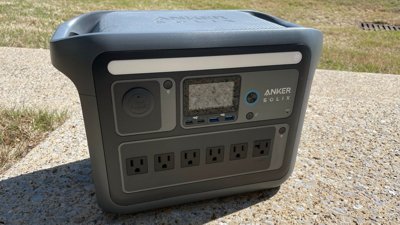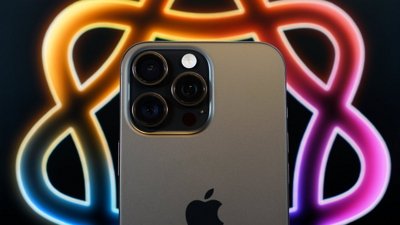Apple Inc. may be faced with an uphill battle in its patent litigation with Burst.com after the courts issued a Markman Claim Construction Memorandum that largely sided with its opponent.
In some situations, however, Markman results have virtually ended trials before they began by almost entirely destroying one side's arguments.
In the case of Burst.com versus Apple, a 48-page Markman decision issued on Tuesday could pose a similar danger to Apple's defense against an April 2006 countersuit by validating many of Burst's concerns over computer media transmission patents, all four of which may cover Apple's iPod and iTunes software.
A Northern District of California judge handling the case has found that about two thirds of Apple's arguments made in the hearing would have created overly narrow definitions of key terms, artificially excluding many of Burst's general but potentially relevant points.
In multiple instances the iPod maker was limiting the patent's relevance to particular hardware or methods when it applies to much more, according to the judge. In one example, the Markman Memorandum notes that Apple's interpretation of a processor for "editing means" is so exacting that it insists only certain Intel, Motorola, and Texas Instruments chips would be valid for the patent, despite their use only as rough examples.
One of the central aspects of the decision was the concept of the "burst time period," a crucial element for Burst's streaming media business and for the patents at hand. Â Where Burst said its definition literally applied to the time needed for sending transmission bursts over a network more quickly than in real time, Apple's interpretation of the same term would only have applied burst time to a distinct compression method used to make those transmissions. Â This argument would have turned numerous claims "nonsensical" all by itself, the judge said.
Some interpretations nevertheless favored Apple. The California-based firm won preference for some of its own definitions during the courtroom discussion, including the right to exclude auxiliary digital ports as transmitters — which may affect the iPod's Dock Connector — as well as ruling that metadata and playlists could not count as editing software.
Still, the mixed reactions by the judge to Apple's legal arguments will create a major obstacles for the consumer electronics firm going forward.
Burst's case is helped by its track record in past lawsuits, as the media streaming firm successfully won a settlement from Microsoft in 2005 over claims that Windows Media Player violated similar patents. The deal netted Burst a $60 million payout in exchange for a non-exclusive license for Microsoft to use Burst technology.
 Katie Marsal
Katie Marsal






-m.jpg)






 Malcolm Owen
Malcolm Owen

 William Gallagher
William Gallagher
 Chip Loder
Chip Loder
 Brian Patterson
Brian Patterson
 Christine McKee
Christine McKee
 Wesley Hilliard
Wesley Hilliard
 Amber Neely
Amber Neely


-m.jpg)






36 Comments
So MS payed 60 mil to settle. Why is Apple even fighting this in court? Pay 'em off and move on. You've got bigger fish to fry.
Ah for pity's sake.. Not another one!
Sorry to be a bit cold here but... As Ye Sow, So Shall Ye Reap! Apple has a propensity to use and abuse the US legal system as it's own private billy club to scare and shock people into submission then they shouldn't be afraid when said club finds its way straight up its ass...
The MS settlement may have had more to do with MS having been caught deleting emails rather than with the validity of the patent. During the period leading up to the MS trial, Apple staff were quoted as saying Burst's technology was nothing new.
Defining the terms is only the first step in the process of determining whether there is infringement, which is done early in the litigation. The court also has to determine validity of the patent. On the issue of validity, the recent U.S. Supreme Court's KSR ruling affords Apple an opportunity to challenge the invention based on the fact that it is obvious to a person skilled in the art. I think this is the patent (Burst.com is not listed as an assignee, but the inventor is the same as other currently pending applications assigned to Burst), titled "Method for connection acceptance and rapid determination of optimal multi-media content delivery over network." It appears that the invention is an algorithm that dynamically maximizes the number of clients that a server can stream content to by analyzing the ideal data flow for the content, amount of bandwith available and the ability to send "burst transmissions." So the next question is whether such a method of data transmission is obvious to someone skilled at network design.